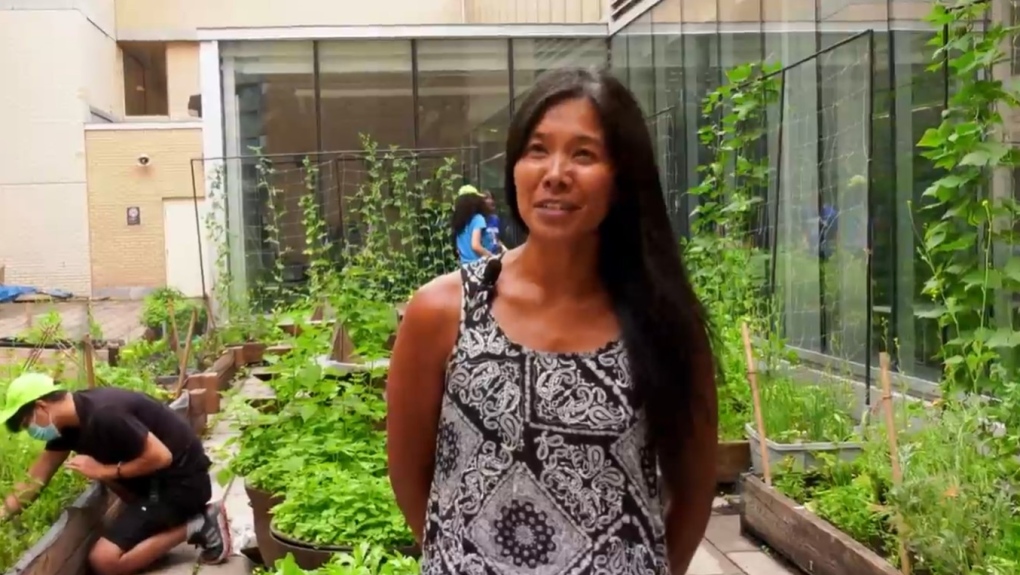Montreal's Dawson College has won a Sustainability Institution of the Year award for its "living campus," coming out on top out of 19 countries around the world.
Endorsed by the United Nation's environment program, the international Green Gown awards celebrate sustainability initiatives at universities and colleges worldwide.
A visit to the campus reveals why. Despite being in the heart of the city, Dawson’s peace garden is an oasis of calm, yet it has roots in tragedy 15 years ago following the 2006 shooting at the college that killed one and injured 19 others.
"Sustainable Dawson was actually started the day of the shooting, the tragic shooting at Dawson, and obviously [after] that even we needed to heal and a task force decided we would make a garden," said Chris Adam, Dawson’s Sustainability Office co-ordinator.
It’s a place for students and staff to rest, reflect, and to take care of living things. Over the years, Dawson's sustainability initiatives have grown with beehives on one roof and ponds with tadpoles on another.
They have abundant milkweed for monarch butterflies and recycling stations all over this "living campus."
 Jennifer De Vera is responsible for program development at Dawson College's Sustainability Office. (CTV News)
Jennifer De Vera is responsible for program development at Dawson College's Sustainability Office. (CTV News)
"We have wonderful student interns and volunteers who maintain the gardens from spring to fall and we harvest once a week. One week, we choose to give to a local food shelter and the other week we have a harvest market," said Jennifer De Vera, who is responsible for program development at Dawson College's Sustainability Office.
All these projects earned Dawson the Green Gown Award. The college makes the most out of its modest budget and was able to outshine 56 international universities for the honour.
"Our mantra of 'well-being for all,' the judges were quite impressed with that. It's not just our well-being at the expense of the environment, we have to take care of ourselves, others and the planet," said Adam.
"With all the biodiversity zones, we really allow the students to live the learning," De Vera added.
The newest project is to grow a "living machine" — a bio-retention area of native aquatic plants that will be placed under the driplines of the Dawson building rooftops that are made of copper.
Since many of the campus buildings are heritage buildings, the rooftops are made of copper, but the rainwater that cascades downwards carries the residue of that copper and will wind its way into the sewer system.
By placing swampy garden beds under the run-off, the rainwater will be cleaned before it goes any further. Narcisse Hassan, who has been working on this project with the Dawson Sustainability Department, said native aquatic plants such as cattails grown in their gardens will be planted along a stretch of a building.
"When the rainwater comes from the roof that has the copper, the plants, they'll clean it, they'll take out the copper and that's when the water goes back into the sewer," she said. "It's clean, it's good for all bio-diversity."
All these projects are meant to be grown in keeping with the “well-being for all” motto, with the bounty of knowledge also being shared with the public.
"We made it very easy to build and since you have the materials, you can make it with your own hands at home," said Cesar Maldonado, an engineer working on the bioretention project. "This way, we multiply the effect of the project because we're going to supply the how-to information on open source for the public."

Post a Comment